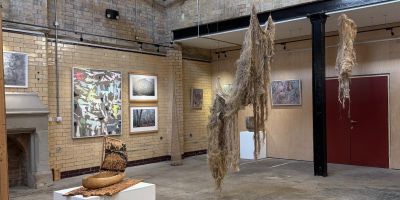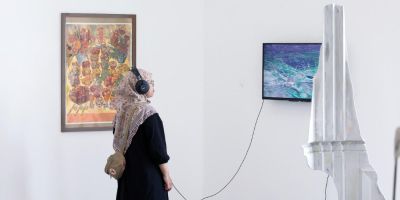PhD postscript: the viva, corrections and next steps

Dr Stuart Bowes recounts the final stages of his collaborative PhD and looks forward to the opportunities beyond.
Well it’s finally over, for better or for worse. On Friday 12 April, I received an email from the Leeds Doctoral College confirming that I’d officially passed my PhD. It is certainly some of the most momentous news I’ve received through this rather mundane medium – perhaps only matched by the email telling me I had been chosen to take on this collaborative research venture all the way back in April 2020.
It has certainly been a busy few months, maybe even more so than at any other time over the last three years. Between starting a new job, moving house and many smaller concerns, this is the first proper opportunity I’ve had to reflect on the epilogue to my doctoral project.
The final phase of a PhD takes longer than you might expect. I finished the previous post in this series by mentioning the preparations for my upcoming viva, which represented only the first (if greatest) milestone in this process.

School of Fine Art, History of Art and Cultural Studies, University of Leeds. Image © University of Leeds.
Back in January, I made my last trip to the School of Fine Art, History of Art and Cultural Studies as a doctoral researcher to defend my thesis (and by extension the entire project) in person before two seasoned academics.
Waiting for my examiners to arrive in my supervisor’s office was in some ways the most challenging part of the process, as keeping your cool at such a climactic moment is never an easy feat. Thankfully, I held my nerve and was able to engage in the unfolding conversation with relative calm.
The doctoral viva is derived from the Latin phrase viva voce or ‘living voice’, which clearly conveys the spoken format of the exam. It aptly summarises my experience for sure, as we ended up debating the subtleties of museological thinking for over two hours.
Looking back, the viva itself all seems a bit of a blur now. But the details I can remember attest to the variety of topics under discussion: registrar practice, critical collections management, assemblage theory, utilitarian ethics, object restitution and so on.
Overall, the experience was simultaneously constructive, rewarding, rigorous and exacting. It’s no exaggeration to say that it was one of the most demanding things I’ve ever done.
The examiners eventually retired to assess my performance, so all I could do was await their decision. I honestly had no idea how it had gone, so much so that I may have inadvertently given the impression to my supervisor that I might not pass (sorry Abigail!). In my defence, I had no benchmark for comparison so it was difficult to judge in the moment.
Fortunately, when we all reconvened after a while my examiners were able to share the news we had been hoping for: I had passed! We breathed a collective sigh of relief and held a productive debrief about the viva and the next steps for the project.
After the excitement was over, I met up with my whole supervisory team from the University of Leeds and the Royal Armouries to celebrate. A fitting end to a successful collaborative PhD.

Post-viva: a very relieved Stuart Bowes, January 2024. Photo courtesy of Stuart Bowes.
But this wasn’t actually the end. Even if you do pass the viva, there are still a few stages of the PhD journey left before officially being awarded the title of doctor.
At the University of Leeds, three key criteria must first be met:
• the examiners’ report must be approved by the Progression and Examinations Group;
• the internal examiner must be satisfied with any corrections;
• the full text of the corrected thesis must be deposited online.
From my perspective, the first requirement was the simplest because I didn’t actually have to do anything. Whenever I checked the online records, the administrative work of processing my award had progressed a little further.
Everything seemed to be in order with the assessment procedure, so the Progression and Examinations Group duly approved my examiners’ recommendation at their March meeting.
Condition 1, check!
The second stipulation, however, required a much greater deal of effort on my part.
Following the viva, the examiners formulate a list of corrections in most instances. My thesis was no exception, as I was tasked with making about thirty corrections ranging from the odd typo to the addition of entirely new paragraphs.
Having started a new full-time role by this point, I no longer had the working day to devote to the PhD. Yet over a succession of evenings and weekends for a couple of months, I gradually chipped away at the thesis until I had satisfactorily addressed all of the examiners’ comments.
This was done by the start of April, so I then sent the corrections for official approval. My examiners soon endorsed the revisions and, just like that, my thesis was ready to be published.
Condition 2, check!

Brotherton Library clock. Image © University of Leeds.
After all this time working on the PhD, it was finally time to go public with my research.
All that remained to do was to upload my thesis to the White Rose eTheses Online repository. This rich resource hosts nearly 25,000 doctoral theses published by researchers from the Universities of Leeds, Sheffield and York across an enormous range of subjects, most of which are free for anyone to view and download.
My thesis is now also available to read there if you fancy a look at what I’ve been doing for the past three and a half years. After all, research better realises its potential when it is shared.
Condition 3, check!
Having met all the terms of doctoral study, it was just a matter of waiting to hear back from the University. It didn’t take long for them to confirm the successful outcome of the project, which neatly brings us back to the momentous email that opened this piece.
It still hasn’t quite fully sunk in that I’m now Dr Bowes, even though I have a fancy certificate to prove it! Perhaps this recognition will come when I graduate in July in the rather fetching green and orange attire pictured below.

Winter graduation at the University of Leeds, 2023. Photograph by Andy Lord.
Now that this protracted exercise in academic research has drawn to a close, what next?
I have been fortunate enough to secure a permanent role within the Research Services team at Leeds University Library. My knowledge of research practices and metadata standards that I developed over the course of the PhD both proved important factors in securing the position.
But where does this new direction leave my work with museums? I like to think I’ve made a small sideways step rather than a decisive break from my previous research interests.
A number of intriguing subjects have emerged out of my doctoral work that I hope to pursue in greater depth: the origins of the registrar profession, the role of collections management standards and the museological history of the Royal Armouries. There’s also the small matter of scoping out the potential dissemination of my thesis as a published book.
All these pursuits should keep me well occupied for the foreseeable future, not even taking into account any leads that emerge from my new line of work. There are more than a few intriguing parallels to explore between collections management and data management.
All that is left for me to say is a huge thank you to everyone at the University of Leeds, the Royal Armouries, Leeds Museums and Galleries and beyond who has supported me throughout this extraordinary endeavour. Now onto the next challenge!
More information
Find out about Dr Stuart Bowes’ research.
Follow Stuart’s journey as a Postgraduate Researcher on the Registrars: Training for the Future blog.
Feature image
Winter graduation 2023, University of Leeds. Photograph by Andy Lord.




